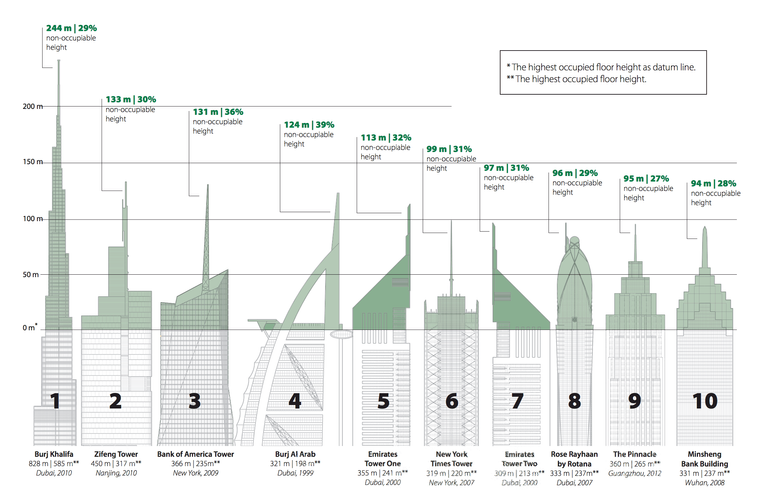After skyscrapers dazzle people with their aesthetic beauty, majestic heights, and intricate scientific and technical engineering, skyscrapers have become a scorched duel between capitalists and big corporations, and because the construction of skyscrapers costs a lot of money and requires a large team of experienced engineers In various fields of engineering, these investors and companies resorted to an engineering hoax to increase the height of the tower to be designed - and this is what many do not know about the hallways of building these tall and dazzling buildings.

The trick is to use a "taper top" as a pillar at the top of the tower to increase altitude. Adding these peaks to the skyscrapers allows investors to add many meters to the building without excessive costs or engineering complications.
The construction of a high column is much cheaper than building a stamped architectural space (which can accommodate population activities), so that the added section of the height increase is unobstructed and inaccessible.
CBC, a non-profit organization that tracks skyscrapers around the world, has revealed that around 60% of high-rise buildings around the world will never be long without the unexploded spaces added to it, which can not contain a civil activity, Which the Council also calls "false rise".

Photo: CTBUH report
The largest example of this is the Burj Khalifa, the world's tallest "theoretically" tower, at an elevation of 830 meters, of which more than 244 meters is unobstructed and can not accommodate an architectural vacuum - a "false" rise - followed by skyscrapers in the United Arab Emirates (Emirates Commercial Tower) and Emirates Tower II (Jumeirah Tower), with 32% and 31%, respectively, of false peaks and columns with no architectural spaces.
This is not "fashion" a new event; Chrysler building in 1928 in addition to the Empire State Building in 1930 in New York are the first examples of the growing phenomenon. This began in the 1930s, but remained silent for more than half a century, before returning to the scene briefly in the 1970s, to return strongly after the new millennium
Based on CTBUH research, of 74 high rise structures completed with false heights, more than 65 buildings were built after 1990, and buildings built after 1999 have a false rise rate of 16% of their total height.
In the end, can high heels, raised hair and frizziness be considered part of human length? So why should the false heights take into account the rise in buildings? Do you still consider the skyscrapers impressive after learning that a large proportion of their height is only a fake to gain fame and money?
________________________________________
Sources